Sustainable and Affordable: Lida Group’s Cost-Effective Steel Structure Construction Delivers Greener High Quality Metal Buildings
2025-Oct-29 15:07:12
By Admin
1. Introduction
In an era defined by climate urgency and economic constraints, the construction industry stands at a crossroads. The demand for buildings that balance environmental responsibility, structural performance, and financial feasibility has never been more pressing. Traditional construction methods, reliant on concrete and masonry, often fall short: they generate excessive carbon emissions, incur high long-term maintenance costs, and struggle to meet accelerating urbanization timelines. Steel structure construction has emerged as a transformative alternative, offering inherent advantages of durability, recyclability, and construction efficiency. Yet for decades, the perception of high upfront costs has hindered its widespread adoption, particularly in cost-sensitive markets.
Lida Group, a pioneer with 30 years of experience in steel structure engineering, has shattered this barrier. By integrating innovative design methodologies, industrialized production systems, and lifecycle cost optimization, the company has redefined the paradigm of steel construction—proving that sustainability and affordability can coexist without compromising quality. This article explores how Lida Group’s cost-effective steel structure solutions are driving the shift toward greener building practices, examining its technological innovations, project implementations, and the broader impact on the global construction industry.

2. The Case for Steel: Why Sustainable Construction Demands Metal Structures
2.1 Environmental Advantages of Steel in Green Building
Steel’s sustainability credentials are rooted in its material properties and lifecycle performance. Unlike concrete, which produces approximately 8% of global CO₂ emissions during production, steel offers a circular economy advantage: it is 100% recyclable without loss of structural integrity. A typical steel structure building retains up to 80% of its raw material value at the end of its service life, while concrete waste requires costly disposal and contributes to landfill burdens. “The recyclability of steel creates a closed-loop system that aligns perfectly with net-zero goals,” notes Zhang Wei, chief engineer at the China Steel Structure Association. “Every ton of recycled steel saves 1.5 tons of iron ore and 0.5 tons of coal, reducing emissions by 1.8 tons of CO₂.”
The construction phase further amplifies steel’s environmental edge. Steel components are precision-manufactured in factory settings, minimizing on-site waste to less than 2%—a stark contrast to the 15-20% waste generated by traditional cast-in-place concrete methods. This prefabrication model also reduces construction-related dust, noise, and water pollution, making steel structures ideal for urban or ecologically sensitive areas.
2.2 The Hidden Cost Advantage: Lifecycle Economics of Steel
Critics often highlight steel’s higher upfront costs compared to concrete, but this perspective overlooks lifecycle value. A 2025 study by the China Steel News Network found that steel structures reduce total ownership costs by 20-30% over 50 years. Key drivers include:
- Faster construction: Steel buildings cut project timelines by 30-50%, enabling earlier occupancy and revenue generation. Lida Group’s 1997 Australian mining camp, completed in 17 days, exemplifies this efficiency.
- Lower maintenance: Galvanized and coated steel components require major repairs only every 20+ years, versus 10-year intervals for concrete structures.
- Adaptability: Modular steel designs facilitate future expansions or repurposing, extending building lifespan by 15-20 years.
- Carbon asset value: As global carbon prices rise (EU prices exceeded €100/ton in 2025), steel’s lower lifecycle emissions translate to tangible financial benefits in carbon trading systems.
2.3 Policy and Market Drivers for Steel Construction
Global sustainability mandates have accelerated steel’s adoption. In China, “double carbon” targets and policies supporting prefabricated buildings have positioned steel as a core material for green construction. The European Union’s Green Deal requires all new buildings to be “zero-emission” by 2030, a standard easily met by steel structures. Meanwhile, urban renewal projects in Asia and infrastructure development in Africa have created unprecedented demand for fast, durable, and low-carbon building solutions—exactly the niche Lida Group has perfected.
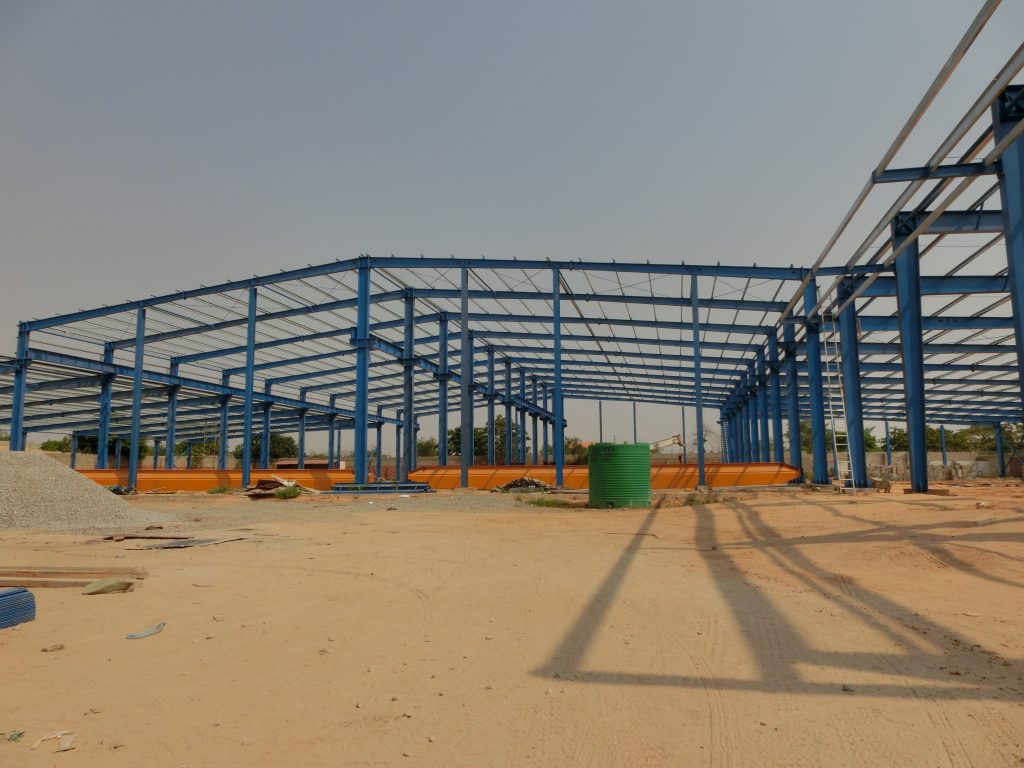
3. Lida Group: 30 Years of Innovating Cost-Effective Steel Solutions
3.1 Company Legacy and Core Competencies
Founded in 1993, Lida Group began as a small manufacturer producing basic steel components for mining camps. Today, it stands as a global leader in steel structure and modular building solutions, with a monthly production capacity of 6,000 tons and projects spanning Asia, Europe, North America, and Africa. The company’s evolution mirrors the steel construction industry’s own transformation—from functional structures to intelligent, climate-adaptive ecosystems.
Lida’s competitive edge stems from three pillars:
- Vertical integration: Complete in-house capabilities from design and material sourcing to manufacturing and on-site installation.
- R&D strength: Long-term partnerships with universities and research institutions, focusing on material optimization and digital construction.
- Quality assurance: Compliance with international standards (AISI, ASTM, BS, DIN, GB, JIS) and a 100% qualification rate for product functionality and durability.
3.2 Technological Innovations Driving Cost and Environmental Efficiency
Lida Group’s ability to deliver affordable green buildings hinges on continuous technological innovation across the construction lifecycle.
3.2.1 Material Optimization: Strength Without the Cost
The company’s strategic use of high-performance yet economical steels (Q235, Q345, and advanced 960MPa high-strength steel) reduces material consumption by 15-20% compared to conventional steel structures. “We engineer every component to use the minimum material required for maximum performance,” explains Dr. Li Ming, Lida’s R&D director. For example, the company’s use of C/Z-shaped purlins and lightweight sandwich panels (glass wool, PU, EPS) cuts structural weight while enhancing insulation—reducing both material costs and long-term energy use.
Surface treatment technologies further optimize value. Four-layer painting and galvanization processes extend component lifespan to over 50 years, eliminating frequent replacement costs. In extreme environments, Lida’s solar-reflective nanocoatings reduce HVAC loads by 52%, while triple-glazed thermal traps maintain comfort in -55°C Arctic conditions.
3.2.2 Digitalization and Industrialized Production
Lida has fully embraced Industry 4.0 technologies to streamline manufacturing and reduce waste. BIM (Building Information Modeling) is integrated into every project, enabling 3D visualization of designs, precise material quantification, and seamless coordination between factory production and on-site assembly. This digital integration reduces material waste to less than 1% in factory production—far below the industry average of 5%.
Automated production lines handle cutting, bending, welding, and painting with millimetric precision. Robot welding ensures consistent joint quality while increasing throughput by 30%, lowering labor costs. The result is a standardized manufacturing process that delivers uniform quality at scale, with the flexibility to customize designs for client needs.
3.2.3 Modular and Prefabricated Construction Systems
Lida’s modular bolt-together systems are a cornerstone of its cost-effectiveness. Components are prefabricated in controlled factory environments, then shipped to site for rapid assembly—eliminating weather delays and on-site labor inefficiencies. This approach was perfected in mining camp projects, where Lida’s teams have installed entire complexes in weeks rather than months.
The modular design also enhances sustainability. Panels and components are easily disassembled and reused in new projects, reducing construction waste. For instance, steel beams from a decommissioned warehouse can be repurposed in a new industrial facility with minimal reprocessing—a stark contrast to concrete, which is typically crushed for low-value aggregate.
3.3 Quality Control: Ensuring Durability Without Premium Pricing
Lida Group’s commitment to quality is embedded in every production stage. The company operates a rigorous three-tier inspection system:
- Incoming material testing: All steel and insulation materials undergo strength, corrosion resistance, and environmental impact assessments.
- In-process monitoring: Automated systems track component dimensions and welding quality, with real-time adjustments for deviations.
- Final certification: Every project receives ISO 9001 and CE certification, with load-bearing and seismic performance tests documented for clients.
This quality focus eliminates costly rework and ensures long-term performance. “Our clients pay for reliability, not just steel,” says Wang Hong, Lida’s quality assurance manager. “A warehouse that lasts 50 years without major repairs delivers far more value than a cheaper structure that fails in 15.”
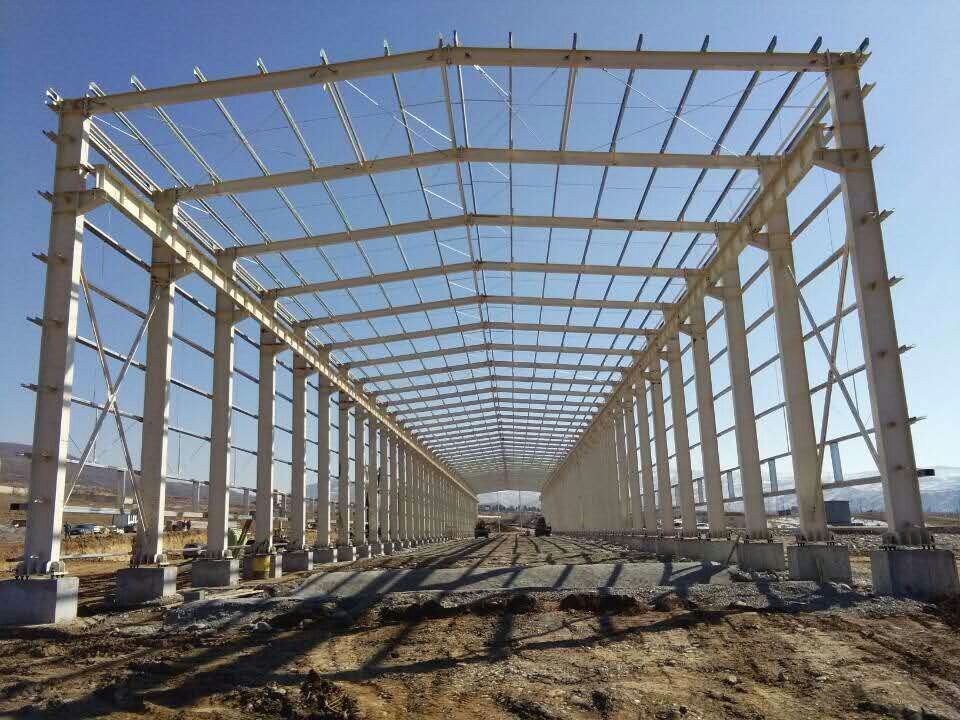
4. Global Project Case Studies: Lida’s Steel Solutions in Action
Lida Group’s portfolio demonstrates the versatility of its cost-effective steel structures across climates, industries, and geographies. Below are four representative projects showcasing sustainability, affordability, and performance.
4.1 Middle Eastern Logistics Warehouse: Fast-Track Construction for Desert Environments
Project Details: 55m × 15.3m × 11.2m warehouse in the Middle East, completed in 2024.
Challenges: Extreme heat (55°C), sandstorms, and tight 8-week delivery timeline.
Lida Solution:
- Solar-reflective nanocoated roof panels to reduce internal temperatures by 12°C.
- 50mm glass wool sandwich walls for insulation and dust resistance.
- Bolt-together steel frame assembled on-site by a 6-person team in 14 days.
Sustainability Impact: 40% lower water use during construction vs. concrete alternatives; 35% reduction in annual energy consumption for cooling.
Cost Advantage: 18% lower total project cost than local concrete bids, with 25-year maintenance costs reduced by 60%.
4.2 European Office-Warehouse Combo: Green Certification on a Budget
Project Details: 2,000m² dual-purpose facility in Eastern Europe, targeting BREEAM “Very Good” certification.
Challenges: Balancing sustainability requirements with cost constraints; strict local environmental regulations.
Lida Solution:
- Galvanized steel frame with 100% recycled content (300 tons of recycled steel used).
- PU sandwich panels for high thermal efficiency (U-value: 0.28 W/m²K).
- BIM-integrated design optimizing natural light and ventilation.
Sustainability Impact: 65% lower lifecycle emissions than equivalent concrete building; 90% of materials recyclable at end of life.
Cost Advantage: Achieved BREEAM certification at 12% below the average cost of certified buildings in the region.
4.3 North American Industrial Storage Facility: Large-Scale Affordability
Project Details: 5,000m² storage building in the U.S. Midwest, serving a manufacturing client.
Challenges: Need for flexible interior space; harsh winter conditions (-20°C); budget 限制 of $85 per square foot.
Lida Solution:
- Light steel structure with clear-span design (no internal columns) for maximum flexibility.
- 50mm glass wool roof panels with snow load reinforcement.
- Pre-fabricated wall sections with 0.5mm color-coated steel sheets for durability.
Sustainability Impact: 30% faster construction reduced equipment emissions by 40%; steel components 100% recyclable.
Cost Advantage: Completed at $78 per square foot, 8% under budget, with projected 20-year maintenance costs 40% lower than a concrete facility.
4.4 Mongolian Mining Camp: Smart, Seismic-Resistant Modular Housing
Project Details: 84-unit worker camp for a copper mine, located in a seismic zone 4 area.
Challenges: Extreme temperature fluctuations (-40°C to 30°C); seismic activity risk; need for remote monitoring.
Lida Solution:
- Bolt-together modular units with buckling-restrained braces for seismic resistance.
- AI-powered energy management system balancing solar, diesel, and battery power.
- Structural health monitoring with strain gauges and environmental sensors.
Sustainability Impact: 19% reduction in energy use via AI optimization; 85% of components reusable; zero construction waste.
Cost Advantage: 35% faster to build than traditional camps; 22% lower annual operating costs due to energy efficiency and low maintenance.
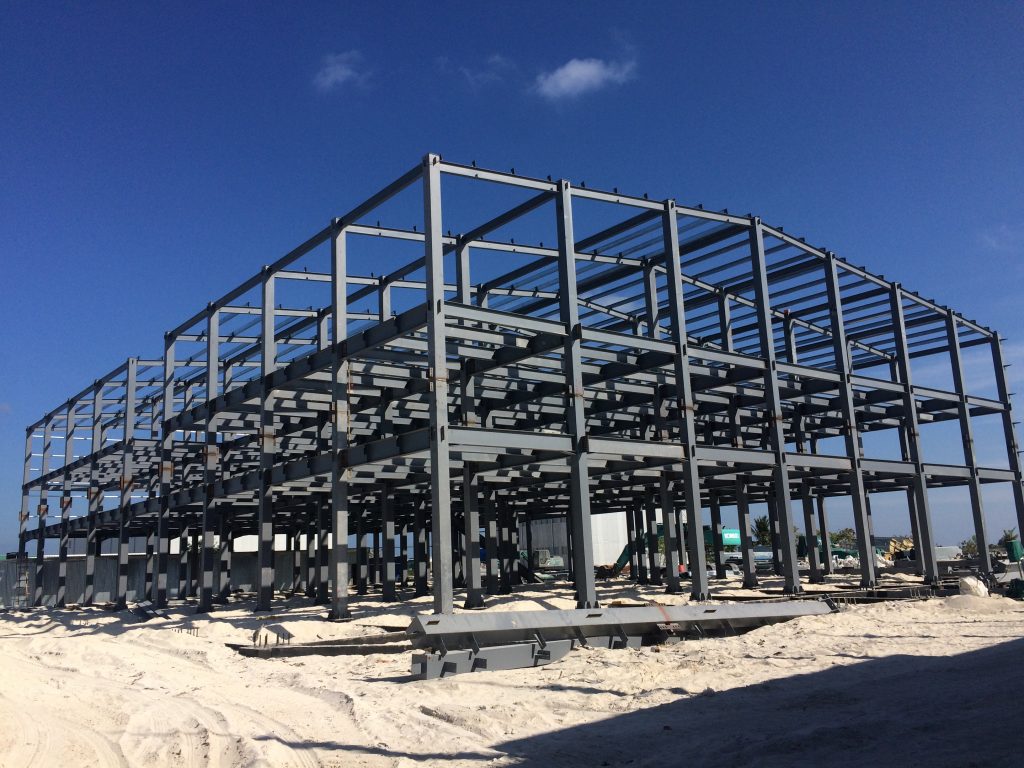
5. Comparing Lida’s Solutions: Steel vs. Traditional Construction Methods
To quantify Lida’s competitive advantage, we compare its steel structure solutions to conventional concrete construction across key metrics:
|
Metric
|
Lida Steel Structure
|
Conventional Concrete
|
Lida Advantage
|
|
Construction Time
|
30-50% faster
|
Standard timeline
|
Earlier occupancy; 20-30% lower financing costs
|
|
Upfront Cost
|
5-10% higher (average)
|
Lower initial investment
|
Offset by lifecycle savings
|
|
50-Year Maintenance Cost
|
$15-20/m²
|
$40-50/m²
|
60-70% reduction
|
|
Lifecycle Emissions
|
35-65% lower
|
Higher (production + maintenance)
|
Compliance with carbon regulations
|
|
Material Recyclability
|
100%
|
<10%
|
Reduced disposal costs; residual value
|
|
Adaptability
|
Easy expansion/repurposing
|
Structural modifications costly
|
15-20 year longer functional lifespan
|
|
Seismic Resistance
|
Excellent (flexible frame)
|
Poor (brittle)
|
Lower risk of damage/failure
|
Data sources: Lida Group project data, China Steel News Network 2025 Report, International Code Council.
The table reveals that while steel may have a slightly higher upfront cost, the total lifecycle value is dramatically superior. For a 10,000m² warehouse, Lida’s steel solution would save approximately $2.5 million in maintenance and operating costs over 50 years—far exceeding any initial cost difference.
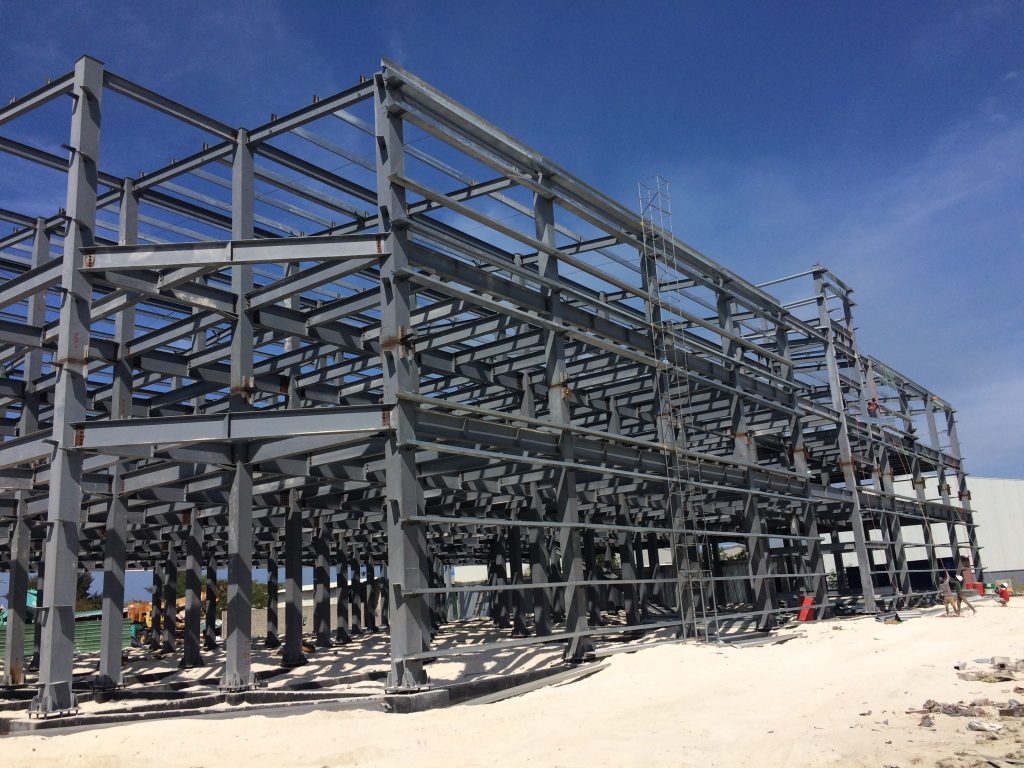
6. Future Directions: Lida Group’s Role in Advancing Sustainable Steel Construction
6.1 Emerging Technologies and R&D Focus
Lida Group is not resting on its laurels. The company’s R&D pipeline focuses on three game-changing areas:
- Hydrogen-reduced steel: Partnering with steel manufacturers to source low-carbon steel produced using green hydrogen, targeting 30% lower embodied carbon by 2027.
- Smart building integration: Expanding AI monitoring systems to optimize energy use, predict maintenance needs, and reduce operational carbon footprints by 25%.
- 3D-printed steel components: Exploring additive manufacturing for complex joints and custom parts, aiming to reduce material waste by a further 10%.
6.2 Addressing Market Barriers
Despite steel’s advantages, misconceptions about cost and complexity persist. Lida is tackling this through:
- Lifecycle cost calculators: Free tools for clients to compare steel and concrete over 50-year horizons.
- Training programs: Workshops for architects and contractors on designing with modular steel.
- Pilot projects: Demonstration buildings in emerging markets to showcase steel’s practical benefits.
6.3 Global Expansion and Sustainability Goals
Lida Group aims to increase its global market share by 10% over the next three years, with a focus on Southeast Asia, Africa, and Latin America—regions where rapid urbanization demands affordable green buildings. The company has set ambitious sustainability targets:
- 100% of steel sourced from 超低 – emission producers by 2030.
- 50% reduction in embodied carbon per project by 2035.
- 100% recyclability of all building systems by 2040.

7. Conclusion
The construction industry’s transition to sustainability cannot succeed without balancing environmental goals with economic reality. Lida Group has proven that this balance is not just possible but profitable, through three decades of innovation in steel structure construction. By integrating material optimization, digital manufacturing, and modular design, the company delivers buildings that are faster to construct, cheaper to maintain, and far more sustainable than traditional alternatives.
Lida’s global projects—from Middle Eastern warehouses to Mongolian mining camps—demonstrate that cost-effectiveness and green performance are not mutually exclusive. The company’s success lies in its ability to see steel not just as a building material, but as a cornerstone of a circular construction economy—one where durability, recyclability, and efficiency create long-term value for clients and the planet.
As global carbon regulations tighten and construction costs rise, Lida Group’s model offers a blueprint for the industry. Steel structure construction, once perceived as a premium option, is now the smart choice for forward-thinking developers. For Lida Group, the next 30 years will be defined not just by growing its business, but by leading the world toward a more sustainable, affordable built environment.
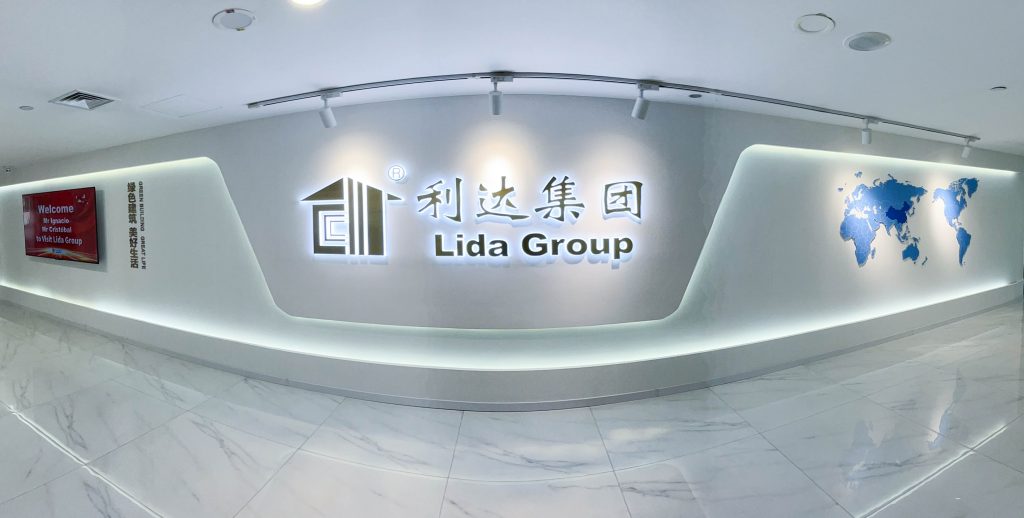
Related news
-
Engineered for Speed and Value: Lida Group's High Quality Metal Buildings Use a Cost-Effective Construction Model
2025-10-29 14:37:06
-
Transforming the Agricultural Sector with Lida Group's Cost-Effective Steel Structure Construction for Durable Farm Storage
2025-10-29 15:03:12
-
Cost-Effective Expansion for Growing Businesses: Lida Group's Free Design Service for Steel Frame Warehouses and Factories
2025-10-29 14:33:24
contact us
- Tel: +86-532-88966982
- Whatsapp: +86-13793209022
- E-mail: sales@lidajituan.com


